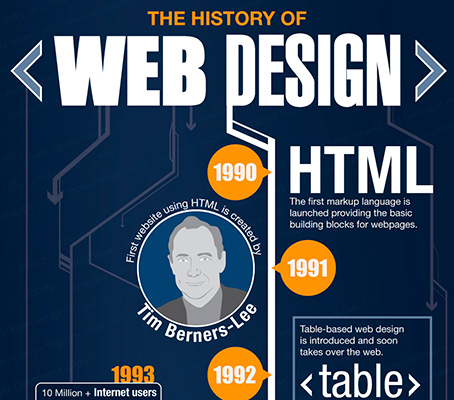Website Design: A Trip Via Time.From Humble Starts To Modern Wonders, Website Design Has Actually Undergone A Substantial Transformation Throughout The Years
Website Design: A Trip Via Time.From Humble Starts To Modern Wonders, Website Design Has Actually Undergone A Substantial Transformation Throughout The Years
Blog Article
Write-Up Produced By-Carstens Wong
In the past, sites were easy and concentrated on information. Navigating was straight, and design was for desktops. Now, individual experience is vital. Information guides layouts for simple navigating. Receptive designs suit different devices. Today, dark setting reduces strain, and minimalist food selections improve navigating. Interactive features involve customers, and vibrant visuals stand out. AI combination increases engagement. See exactly how https://www.techedt.com/10-reasons-you-need-a-digital-marketing-strategy has actually advanced to improve your on the internet trip.
Very Early Days of Web Design
In the very early days of web design, simplicity reigned supreme. Web sites were basic, with minimal shades, typefaces, and formats. The emphasis got on supplying info as opposed to showy visuals. Individuals accessed the net via sluggish dial-up connections, so speed and functionality were essential.
Navigating menus were straightforward, commonly located at the top or side of the page. Web sites were designed for home computer, as mobile browsing had not been yet widespread. Content was king, and developers focused on easy readability over complicated layout aspects.
HTML was the key coding language utilized, and designers needed to work within its restrictions. Animations and interactive functions were minimal compared to today's criteria. Internet sites were static, with little dynamic content or individualized user experiences.
Surge of User-Focused Style
With the evolution of internet site design, a shift in the direction of user-focused style principles has actually ended up being increasingly noticeable. Today, creating websites that prioritize individual experience is important for involving visitors and accomplishing company objectives. User-focused design entails understanding the needs, choices, and habits of your target market to tailor the web site's layout, content, and includes accordingly.
Developers now conduct detailed research study, such as user surveys and use testing, to gather insights and comments straight from customers. This data-driven method aids in creating intuitive navigation, clear calls-to-action, and aesthetically appealing user interfaces that resonate with site visitors. By positioning the individual at the center of the layout process, internet sites can deliver a more tailored and enjoyable experience.
Receptive design has actually also become a vital aspect of user-focused layout, guaranteeing that web sites are optimized for numerous gadgets and display dimensions. This flexibility boosts access and functionality, dealing with the varied ways individuals interact with websites today. In essence, the rise of user-focused layout represents a shift in the direction of creating digital experiences that prioritize the requirements and expectations of the end individual.
Modern Trends in Website Design
Explore the latest patterns forming web design today. One famous trend is dark mode style, using a sleek and modern appearance while lowering eye stress in low-light atmospheres. Another essential pattern is minimal navigating, simplifying food selections and enhancing customer experience by concentrating on essential elements. Incorporating micro-interactions, such as animated switches or scrolling effects, can develop an extra appealing and interactive site. Receptive style remains essential, making certain smooth customer experiences throughout various tools. Furthermore, using business search engine optimisation and asymmetrical layouts can include aesthetic rate of interest and draw attention to details web content.
Incorporating AI innovation, like chatbots for client assistance or personalized referrals, boosts individual engagement and improves procedures. Access has also end up being a significant pattern, with designers focusing on inclusive layout techniques to cater to diverse customer demands. Embracing sustainability by enhancing site performance for speed and performance is another arising pattern in website design. Collaborating with individual feedback and data analytics to repeat and improve layout continually is crucial for remaining pertinent in the ever-evolving electronic landscape. By accepting these contemporary trends, you can develop a visually appealing, straightforward site that reverberates with your audience.
Final thought
As you reflect on the evolution of internet site layout from the early days to currently, you can see just how user-focused style has actually ended up being the driving pressure behind modern-day fads.
Accept the trip of change and adjustment in website design, constantly keeping the individual experience at the center.
Stay current with the most up to date fads and innovations, and never ever quit progressing your strategy to create visually magnificent and straightforward websites.
Evolve, adjust, and develop - the future of web design remains in your hands.
